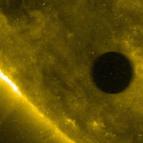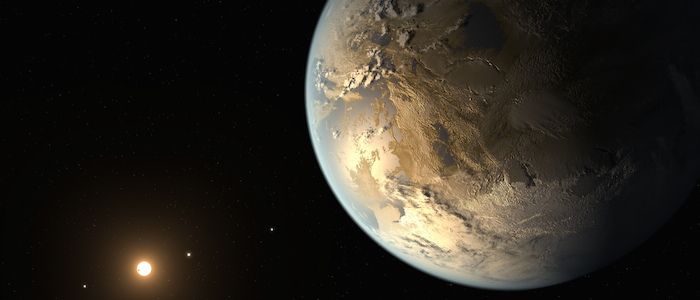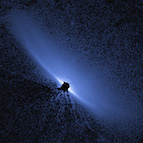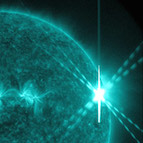Exoplanets and Their Atmospheres
 Measuring atmospheric properties (e.g., composition, wind speeds) of exoplanets that pass in front of their host star. While such transmission spectra require some of the largest telescopes ever built, observing the transit light curve can be done with modest telescopes, including those located here at Wesleyan.
Measuring atmospheric properties (e.g., composition, wind speeds) of exoplanets that pass in front of their host star. While such transmission spectra require some of the largest telescopes ever built, observing the transit light curve can be done with modest telescopes, including those located here at Wesleyan.

 Characterizing the morphological and physical characteristics of the gas and dust in the vicinity of the Sun and the closest stars. The LISM dictates the structure of the heliosphere, and thereby can be used to measure the cosmic ray flux incident on solar sytem planets in the recent past, and most immediate future.
Characterizing the morphological and physical characteristics of the gas and dust in the vicinity of the Sun and the closest stars. The LISM dictates the structure of the heliosphere, and thereby can be used to measure the cosmic ray flux incident on solar sytem planets in the recent past, and most immediate future.  Investigating the conditions of adolescent stellar systems that are transitioning from a young planet-forming disk to a cleared mature system like our own. These systems are dominated by dust processed from a multitude of planetismal collisions, but some gas remains, which can be observed in absorption against the host star.
Investigating the conditions of adolescent stellar systems that are transitioning from a young planet-forming disk to a cleared mature system like our own. These systems are dominated by dust processed from a multitude of planetismal collisions, but some gas remains, which can be observed in absorption against the host star. Studying the upper atmosphere of stars like our Sun, applying the "solar-stellar connection" to understand dynamical properties (e.g., magnetic fields, flares). As more and more stars are found to host exoplanets, the details of stellar activity and evolution will become important in our understanding of habitability around these stars.
Studying the upper atmosphere of stars like our Sun, applying the "solar-stellar connection" to understand dynamical properties (e.g., magnetic fields, flares). As more and more stars are found to host exoplanets, the details of stellar activity and evolution will become important in our understanding of habitability around these stars.